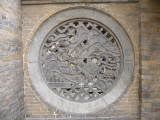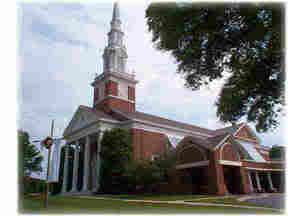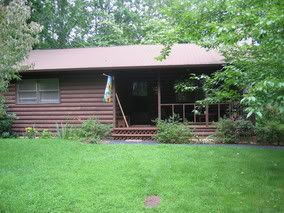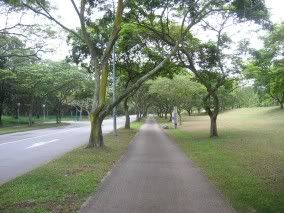living in the mountains of western north carolina
Over the last fourteen years I lived in two metropolitan cities, serving two large (2000+ member) churches as senior pastor. Then I was asked by my Bishop to serve as a District Superintendent and assigned to a geographical area that includes the seven westernmost counties of our state. There are sixty-nine congregations in our district, and these range in size from very small family chapels to large regional churches.
My district also includes the Wesley Foundation at Western Carolina University, The Hinton Rural Life Center in Hayesville, the Lake Junaluska Assembly, the River of Life Ministry on the Nantahala, a house church (the Filling Station) in Hayesville, a campus of the Children's Home in Franklin, two (UMAR) homes for the developmentally disabled in Hayesville, a Wilderness Trail Ministry headquartered in Waynesville, a Circles of Poverty ministry in Canton, and an emerging missional church network in partnership with the Asheville District.
Our area includes the Cherokee Reservation, many miles of the Appalachian Trail and the Blue Ridge Parkway, a substantial portion of the Great Smoky Mountains National Park, and the Nantahala Outdoor Center. It is dotted by small towns that are stable, welcoming and inhabited by year-round residents and seasonal pilgrims.
Our family had purchased a small cabin here about ten years ago, and we would visit on long weekends and in the summer. So we knew a little bit about the area, but it is different when you live here. I loved Charlotte and Winston-Salem, but the following are some observations about our new home: the western mountains of North Carolina.
1. Many creative and interesting people rearrange their lives to live in the mountains. Last Sunday I worshiped in a small church, and during the passing of the peace met a man and his father. The older gentleman was a graduate of Harvard and his son and his wife had an adopted daughter from China. I have met retired professors, politicians, ministers and athletes; I have also come across interesting couples in middle adulthood seeking to make a life here, and I have met young adults who are creative, environmentally conscious and seeking a spiritual life of one sort or another.
2. Mountain people as a rule are not anti-government. Appalachia (in which all of my district is located) was ravaged by northeast industrialists, who raided the resources (such as timber and coal) and departed. The government intervened afterward in a variety of ways, and largely through the New Deal, to seek to lift the economic status of the mountain people who were left behind. So the anti-government rhetoric of recent times largely falls on deaf ears among the mountain people (this is not true of transplants, many of who are actually antagonistic toward government programs). The people of these seven counties were kept alive by projects like the parkway, the interstate, the national park, the university, the public schools and the hospitals, all initiated by visionary political leaders.
3. A few personal preferences: there is an excellent public radio station, WNCW, that for the most part airs indigeneous music----blues, bluegrass, folk, rock, jazz. For example, WNCW airs Grateful Dead music for several hours every Wednesday. There are several fine coffee shops, including Mountain Perks in Bryson City, Panacea in Waynesville, and Coffee and Clay in Robbinsville. There are a few remarkable restaurants, among them Cafe REL in Franklin and Frog Leap Public House in Waynesville, and LuLu's in Sylva; the Smoky Mountains News is a really fine (and free) weekly newspaper; and City Lights in Sylva is a great independent bookstore. And the shopping in downtown Waynesville, especially Mast General Store and the Waynesville Fly Shop (fly fishing) is nice.
4. The pace is slower. Mountain people take the time to ask questions, to notice that you are a newcomer, to strike up a conversation. They also appreciate it when you take an interest in them.
5. I live within a half an hour from Asheville. In Charlotte I often drove thirty minutes to a destination...from south Charlotte to uptown, for example or to the Central Avenue area or NoDa where some of the more interesting restaurants could be found. It is an easy drive to West Asheville, which includes a number of hangouts. As an aside, I appreciated the convenience of the Charlotte Airport, but I also love the Asheville Airport---it is small, friendly, and has a twenty minute flight to either Charlotte or Atlanta.
6. I live at Lake Junaluska, and my favorite spot is the lake itself. There is a 2.5 mile loop around the lake, and I generally walk around it every day that I am home. Since I have a short commute (I live within five minutes of my office), I find that the walk replaces the drive time. What else do I love about Junaluska? My short list includes the SoulFeast (in the summer), the Peace Conference (in the fall) and the Caring for Creation Conference (in the spring). I am also constantly amazed by the people who flow through this place: missionaries, bishops, seminary presidents, musicians, authors, preachers. It is also significant for me that my wife and I were ordained in Stuart Auditorium, and our older daughter was baptized in Memorial Chapel
7. The poverty is real. Rural poverty is often more hidden than urban poverty, because it exists at a greater distance from media centers. But the poverty in our area is real and palpable. At the same time, I am amazed by the ways our churches are responding to basic needs: hunger, education, health. The people are heroic in their perseverance and the response of congregations is inspiring, and yet nothing they see as extraordinary. It is a way of life.
8. The multicultural challenge in the mountains is less about race and more about geographical origins; in particular, the relations between the natives and the transplants. Some churches (and pastors) navigate these relationships very well, and others do not. In time many of the transplants do become natives; and yet it is also true that some multigenerational families can be closed to outsiders, while some newcomers are ignorant of cultural patterns and practices. In the best of times and in the healthiest of places, it comes together, to the benefit of all.
9. Cool mornings and evenings, watching a fire, and warm days, when the sun comes out.
10. An opportunity to learn new habits or to renew old ones. I have been fly-fishing once in the past year; this is an embarrassing confession, since I live in one of the prime locations for this in our nation. I have also taken a couple of challenging hikes, one in Deep Creek and one to the peak of Standing Indian (5499 feet). I would love to combine some ongoing rhythm of fly fishing and hiking; this might help if I got engaged with observance of Sabbath. That is on my list for this new year.
So it is about learning to appreciate where you are, developing new skills and living into the responsibilities of a new job, meeting new people and fitting into their histories. It is a beautiful part of the world, and a great place to live and be in ministry.
Labels: appalachian trail, lake junaluska, mountains, western north carolina




 Carter's Roost
Carter's Roost




2 Comments:
this was a great reminder of the wonderful place that we call home. i need to seek out more opportunities to enjoy it!
I grew up going to Standing Indian campground (and hiking to the peak) with Glenn Memorial, and when I was in 4th grade I just knew I was going to grow up and be a great writer living at Lake Junaluska. Maybe someday it will still come true! Thanks, Ken.
Post a Comment
<< Home